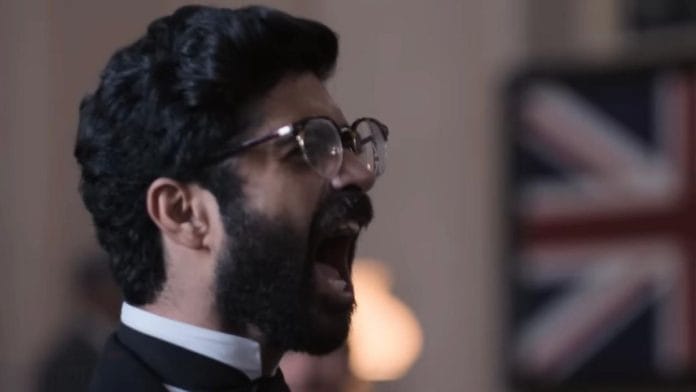New Delhi: Director Ram Madhvani was troubled by India’s colonial history and how Indians were made to feel inferior. That sense of discomfort became the reason for him to work on Waking of a Nation, a historical web series inspired by events surrounding the 1919 Jallianwala Bagh massacre.
The period drama, to release on Sony LIV on 7 March, follows the journey of fictional lawyer Kantilal Sahni (Taaruk Raina) as he discovers a conspiracy linked to the Amritsar tragedy.
“I started this journey five years ago when I was trying to decide what to make next. I was thinking about colonialism, racism and colourism and how it was considered White man’s burden to civilise us. It troubled me that we were made to feel inferior,” said the National Award-winning and International Emmy-nominated filmmaker. “I did not want to do it in a way that’s jingoistic, but because it is something about us, how India became India,” he added.
The show zooms in on the Hunter Commission, an inquiry committee appointed to investigate the Jallianwala Bagh massacre. As the commission works to expose the truth, Kantilal seeks to uncover the real forces behind General Reginald Dyer’s firing orders.
Ram Madhvani’s earlier work includes the web series Aarya (2020-23), about a drug cartel in Rajasthan. The show marked Sushmita Sen’s OTT debut. His 2016 film Neerja, starring Sonam Kapoor, won the Best Feature Film in Hindi award in 2017, at the 64th National Film Awards.
“It’s my way of highlighting India’s rich history and the struggles we’ve faced. I’m proud of the unique storytelling style I’ve brought to the show,” said Madhvani.
Capturing 1919 Amritsar
Ram Madhvani – particular about getting the historical setting of his show right – shot Waking of a Nation in the bylanes of Amritsar. “The biggest problem, however, was there were so many wires everywhere, and we had to cover them up because they would come into the shot. We also used a lot of granite and sand – materials mostly used for construction around the time,” recalled Madhvani.
His production team pored over archival material and made multiple trips to locations across the city to authentically capture the Amritsar of 1919. Madhvani wanted to completely avoid the use of graphics in the show.
He credits his co-writers Shantanu Srivastava and Shatrujeet Nath for bringing his vision to life through their words. “When you get the money to make a show, it is actually the writing that gets you that,” he said.
Taaruk Raina, who recently worked in the Netflix romcom Mismatched, was chosen out of nearly 200 actors who auditioned for the role. “We are told he usually plays chocolate boy characters, so we now call him brown chocolate boy. But on a serious note, it was just his talent and audition that landed him the role,” said Madhvani.
The filmmaker also highlights the works of saint-poet Kabir in his upcoming show. “The show explores colonialism, and racism, and Kabir believed that all men are equal. So, his works fits into this show,” he said. Madhavani previously explored Bhagavad Gita verses in Aarya, and the Maha Mrityunjaya mantra in Neerja (2016). Lyricist and musician Sameer Uddin, who “works with a lot of folk influences” according to Madhvani, was roped in to compose the score for Waking of a Nation.
“I want to create work around things that I call cultural piggybacking. The massacre is something we all know of, and this show takes a new look at it,” said Madhvani. He wants to ensure that Waking of a Nation stands out among the crowd of content on streaming platforms.
“I don’t want to copy. If we make something rooted in our culture, it has global appeal. People do not watch Korean shows for the fact that it is based in Korea, but for what it shows in emotions and how it’s true to its culture,” said Madhvani. “The more local you are, the more global you get. That way, food and content are exactly the same.”
(Edited by Zoya Bhatti)






